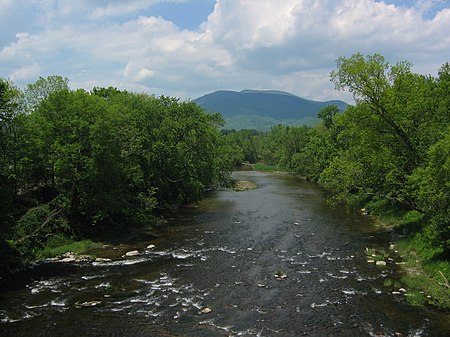Sugar River (New Hampshire)

The Sugar River is a 27.0-mile-long (43.5 km) river located in western New Hampshire in the United States. It is a tributary of the Connecticut River, which flows to Long Island Sound. The Sugar River originates at the outlet of Lake Sunapee in the town of Sunapee, New Hampshire. The river flows west through the town of Newport and the city of Claremont. It reaches the Connecticut across from the village of Ascutney, Vermont. Numerous falls and steep drops on the Sugar River have led to hydro-powered industrial development. Besides the large mill towns of Claremont and Newport, hydro-related developments occur in the villages of Sunapee, Wendell, Guild, and West Claremont. An inactive railroad known as the Concord to Claremont Line follows the Sugar River from Wendell to the river's mouth. Tributaries of the Sugar River include the South Branch, entering in Newport, and the North Branch, entering between Newport and North Newport.
Excerpt from the Wikipedia article Sugar River (New Hampshire) (License: CC BY-SA 3.0, Authors, Images).Sugar River (New Hampshire)
Main Street, Claremont
Geographical coordinates (GPS) Address Nearby Places Show on map
Geographical coordinates (GPS)
| Latitude | Longitude |
|---|---|
| N 43.401944444444 ° | E -72.399166666667 ° |
Address
Main Street
05030 Claremont
New Hampshire, United States
Open on Google Maps








